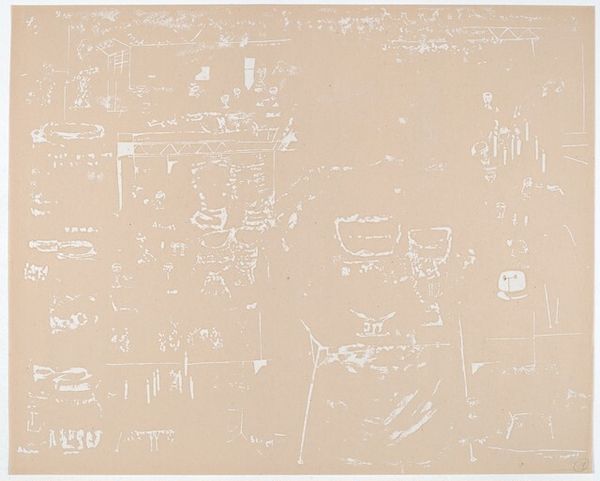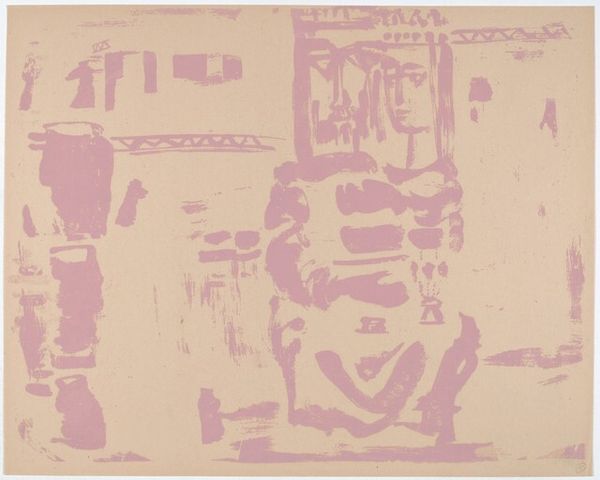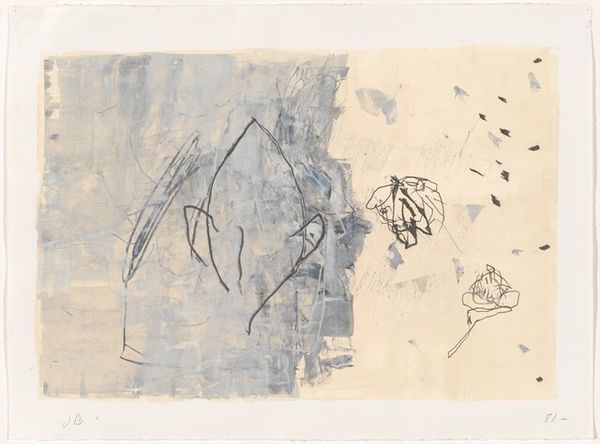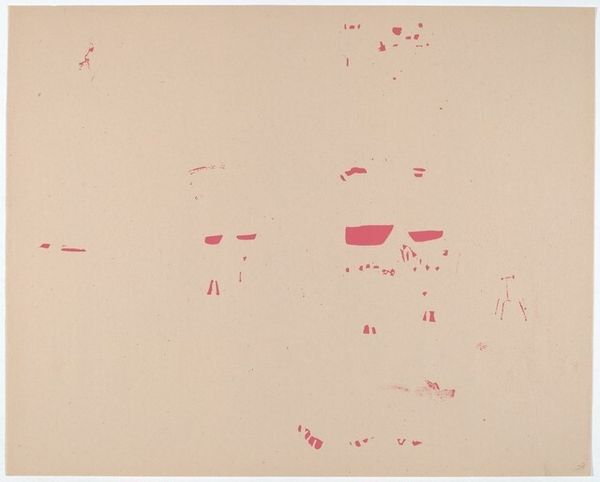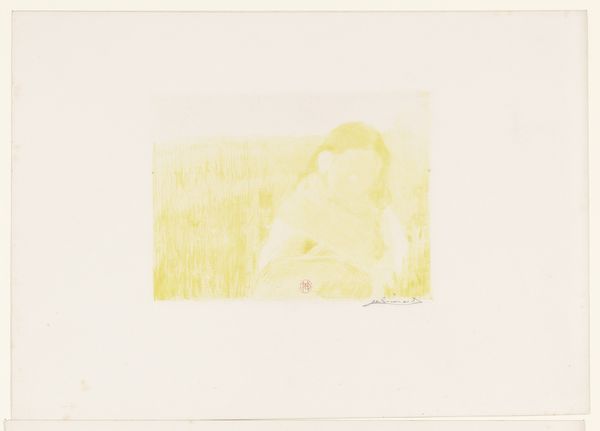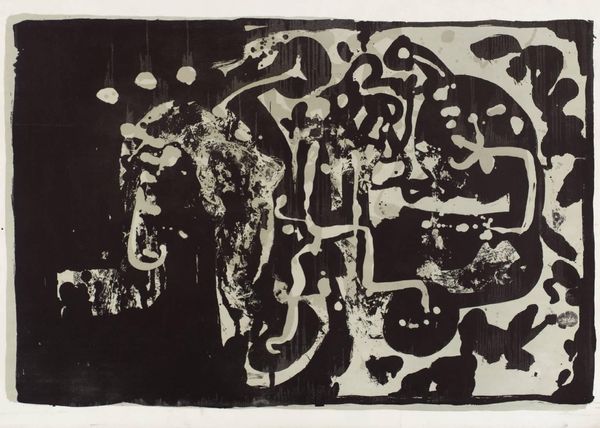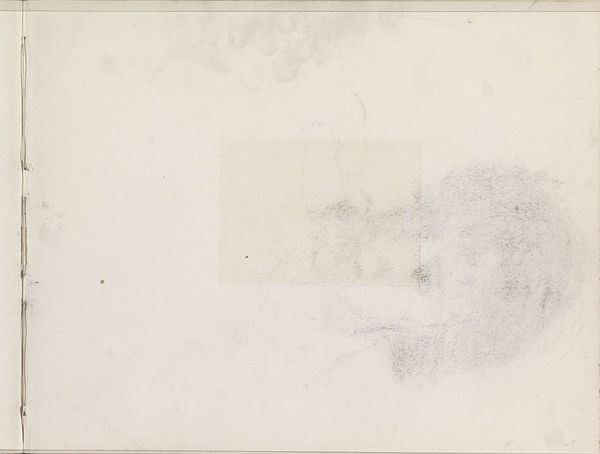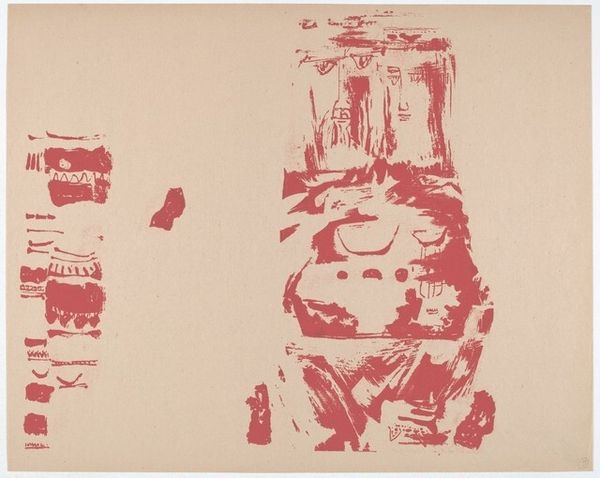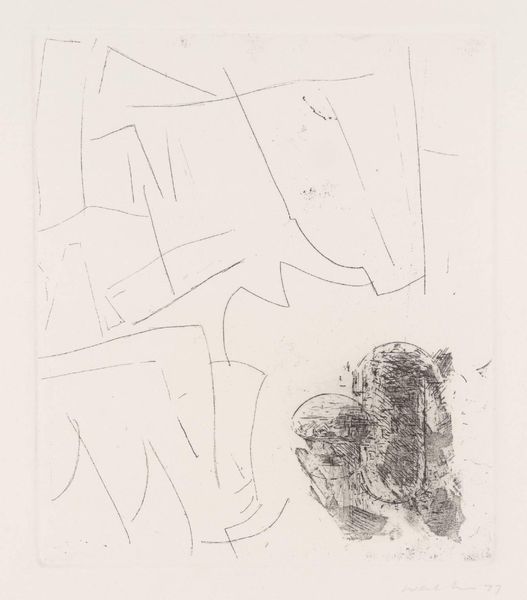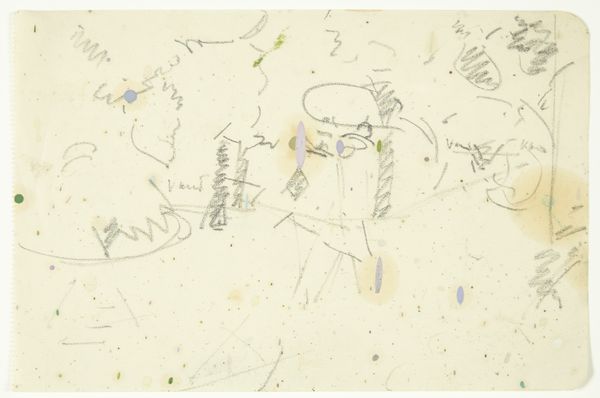
graphic-art, print, linocut, monoprint
#
abstract-expressionism
#
graphic-art
#
linocut
# print
#
linocut
#
hand drawn type
#
monoprint
#
linocut print
Copyright: National Gallery of Art: CC0 1.0
Editor: So, this is Corita Kent's "The Beginning of Miracles: XIII" from 1953, a linocut monoprint. It's quite abstract, almost like an echo. What do you see when you look at this piece? Curator: I immediately think about the labor involved in printmaking, especially in 1953. Kent chose linocut, a process lending itself to multiples but here used for a unique monoprint. The deliberate use of such a modest material pushes against traditional notions of art as precious, doesn’t it? Editor: Definitely. I guess I hadn’t thought about linocut as deliberately "modest." Curator: Consider also the social context. Post-war America, consumerism on the rise, and here’s Kent, a nun, using readily available materials, and potentially discarded linoleum, to create something spiritually evocative. Do you see how the hand-drawn type hints at textual inspiration, further connecting the work to accessible communication rather than elite artistic traditions? Editor: Yes, the type seems integral to the overall texture. The pink, though, it seems like an odd choice for the '50s. Curator: Or perhaps a very knowing one. Think of pink’s evolving association with femininity and consumer culture during that era. It’s a colour both loaded and deceptively simple. It challenges a purely reverent interpretation, hinting at a complex dialogue with the world around her. What’s your take on that duality? Editor: It almost feels like she's reclaiming it, taking this color associated with commercialism and using it in a religious context. The texture itself seems almost subversive given that reclaiming, a visual representation of repurposed materials? Curator: Precisely. We can consider this a radical act within the artistic landscape of the time, where materiality and process are brought to the fore to challenge social and artistic norms. Editor: Wow, I didn’t consider all of those angles when I first looked at it. Thanks! Curator: My pleasure. It is often in the materials and production methods themselves where much of the meaning resides.
Comments
No comments
Be the first to comment and join the conversation on the ultimate creative platform.
